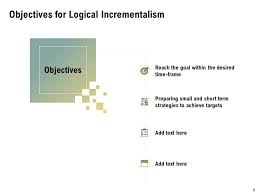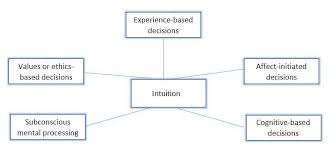The Power of Collective Decision Making
Collective decision making is the process of making decisions as a group rather than as individuals. This approach harnesses the collective wisdom, knowledge, and perspectives of all group members to arrive at a decision that is more informed and inclusive.
One of the key benefits of collective decision making is the diversity of ideas and viewpoints that are brought to the table. When individuals with different backgrounds, experiences, and expertise come together to make a decision, they can consider a wider range of possibilities and potential outcomes.
Furthermore, collective decision making can lead to greater buy-in and support for the final decision. When all group members have had a voice in the decision-making process, they are more likely to feel invested in the outcome and committed to its success.
However, collective decision making can also present challenges, such as longer decision-making processes and potential conflicts among group members. It is important for groups engaging in collective decision making to establish clear communication channels, ground rules, and processes for resolving conflicts in order to ensure a smooth and effective decision-making process.
In conclusion, collective decision making has the potential to be a powerful tool for organizations and communities looking to make well-informed and inclusive decisions. By leveraging the diverse perspectives and expertise of group members, collective decision making can lead to better outcomes and increased support for decisions.
5 Essential Tips for Effective Collective Decision-Making
- 1. Encourage open communication and active listening among group members.
- 2. Consider all perspectives and opinions before making a decision.
- 3. Utilize tools like voting or consensus-building techniques to reach a collective decision.
- 4. Assign roles or responsibilities to ensure everyone contributes to the decision-making process.
- 5. Reflect on past decisions to learn and improve the collective decision-making process.
1. Encourage open communication and active listening among group members.
To enhance the effectiveness of collective decision making, it is crucial to encourage open communication and active listening among group members. By fostering an environment where all individuals feel comfortable sharing their perspectives and ideas, the group can benefit from a diverse range of viewpoints. Active listening plays a key role in this process, as it ensures that each member feels heard and understood. When group members actively engage in listening to one another, they can build upon each other’s ideas and work collaboratively towards reaching a well-informed decision that reflects the collective wisdom of the group.
2. Consider all perspectives and opinions before making a decision.
When engaging in collective decision making, it is crucial to consider all perspectives and opinions before reaching a final decision. By actively listening to and valuing the diverse viewpoints of all group members, a more comprehensive understanding of the issue at hand can be achieved. Taking the time to weigh different perspectives allows for a more informed decision-making process that takes into account various angles and potential outcomes, leading to a more well-rounded and inclusive final decision.
3. Utilize tools like voting or consensus-building techniques to reach a collective decision.
To enhance the collective decision-making process, it is beneficial to utilize tools such as voting or consensus-building techniques. By incorporating these methods, group members can actively participate in the decision-making process and contribute their opinions. Voting allows for a clear and structured way to determine the group’s preferences, while consensus-building techniques encourage open dialogue and collaboration to reach a decision that everyone can support. These tools help streamline the decision-making process and ensure that all voices are heard, leading to a more effective and inclusive collective decision.
4. Assign roles or responsibilities to ensure everyone contributes to the decision-making process.
Assigning roles or responsibilities within a group engaging in collective decision making is crucial to ensure that everyone actively contributes to the process. By clearly defining each member’s role and responsibilities, individuals are empowered to share their unique perspectives, expertise, and ideas. This not only helps in fostering a more inclusive decision-making environment but also ensures that all voices are heard and valued. Assigning roles can also help streamline the decision-making process by providing structure and direction, ultimately leading to more efficient and effective outcomes.
5. Reflect on past decisions to learn and improve the collective decision-making process.
Reflecting on past decisions is a crucial step in improving the collective decision-making process. By analyzing previous decisions, groups can identify what worked well and what could have been done differently. This reflection allows for learning from past mistakes and successes, leading to more informed and effective decision making in the future. Additionally, reflecting on past decisions helps build a culture of continuous improvement within the group, fostering a sense of accountability and growth among its members.




